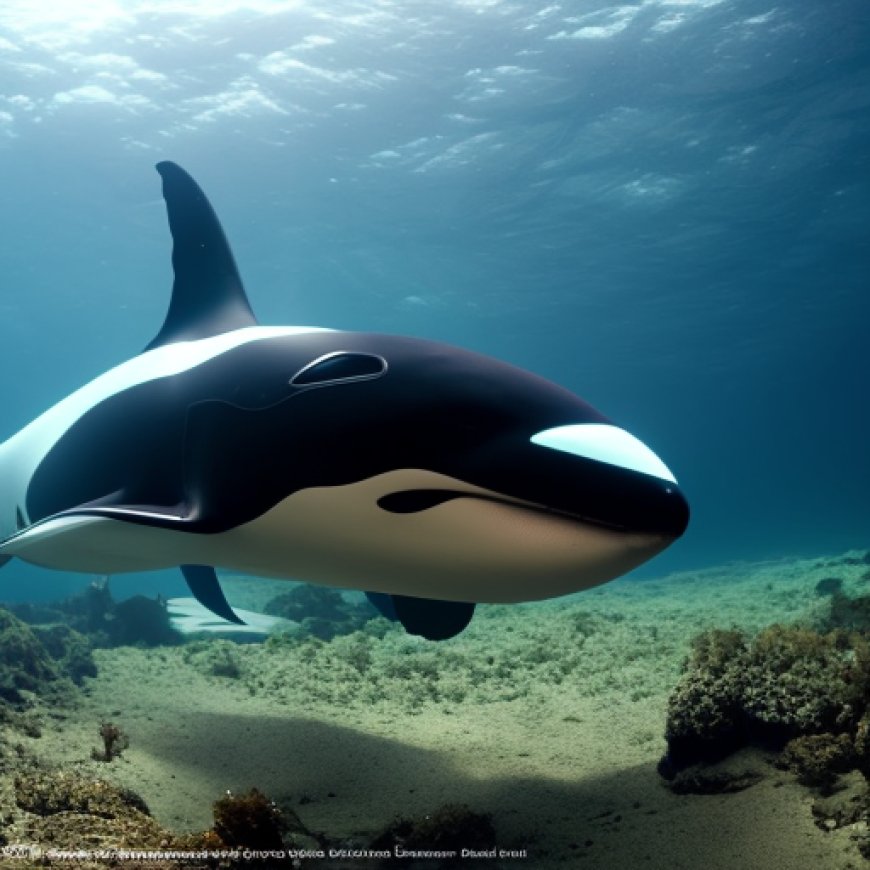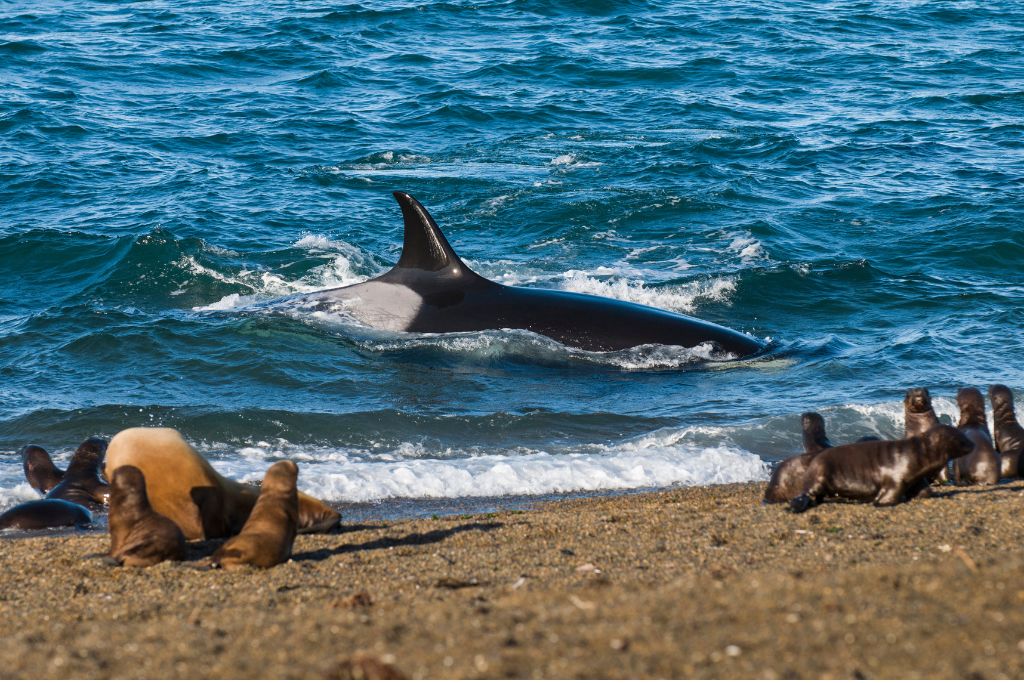Exploring the Unique Hunting Strategy of Killer Whales | Earth.Org
Intentional Stranding: Exploring the Unique Hunting Strategy of ... EARTH.ORG


Orca Calves and the Intentional Stranding Hunting Technique
The intentional stranding hunting technique has been observed in orca calves in the Valdes Peninsula, Argentina, and the Crozet archipelago in the Indian Ocean. This behavior is learned through the physical and biological dynamics of their pod, earning them the nickname “killer whales.” The rarity of orca beachings, the passing down of this trait from one generation to another, and its association with mass cetacean strandings and orca speciation can be explained by this phenomenon.
The “Wolves of the Sea”
Orcas, also known as killer whales, are apex predators with highly specialized predation techniques. While most feed on fish and squid, some pods have been known to attack dolphins and adult whales. Orcas are social animals, with populations composed of matriarchal pods found in all of the world’s oceans and a variety of marine ecosystems. Their preeminence in the aquatic food chain can be attributed to their sophisticated hunting strategies.
The Development of Intentional Stranding Hunting Technique
Select pods of orcas in the southern Indian and Atlantic Oceans have developed the intentional stranding hunting technique. Orcas in the Valdes Peninsula, Argentina, and the Crozet Islands in the Indian Ocean are famous for intentionally stranding themselves in pursuit of seals and sea lions. They use the thrust of waves and their own momentum to lunge at sunbathing seals on gravel beaches. They then wait for the next wave to carry them back into deeper waters.

This behavior was first observed in the 1970s in Argentina and has been observed hundreds of times within the same pod, suggesting the passing down of this hunting technique from one generation to another. Three significant factors contribute to the development of this technique in orca calves: high parental investment in the teaching-learning process, low reproduction rates among females in the Crozet Islands and Valdes Peninsula, and the social transfer of skills through alloparental apprenticeship.
The Implications for Orca Speciation
The intentional stranding hunting technique has led to the speciation of killer whales. Different populations of orcas have vast cultural and strategic differences, leading to the splitting up of several species. As orcas speciate, their ability to reproduce becomes restricted to their own kind, posing a possible threat to their numbers in the future. Studying characteristic orca behaviors like intentional stranding can help scientists assess this threat and plan targeted conservation efforts if necessary.
The Role of Mothers in Skill Development
The development of the intentional stranding hunting technique in orca calves requires high time and energy investment by the mother to reduce associated risks. Mothers assist their calves by producing artificial waves to lift them when they accidentally beach themselves ashore. They also push their calves towards prey and back to the ocean, teaching them by example. The low fertility rate among Crozet Islands and Valdes Peninsula orcas allows mothers to devote more time and energy to their calves’ skill development.
The Role of Social Learning
Orcas live in matrilineal pods, with all females contributing to the upbringing of calves. Social play and alloparental teaching play a crucial role in the transmission of predation strategies from one generation to the next. Through social beaching play and interaction with experienced females, calves learn essential hunting strategies. This social learning enhances the predation success rate of the pod.
The Future of Species Adaptation
Understanding the development of adaptation skills in species can help us comprehend the intricacy of ecological balance in nature and the impact of human intervention. Answering questions about the intentional stranding hunting technique and its effects on the ecosystem, food chain, and other unique hunting strategies in the wild can guide conservation efforts to safeguard species and maintain ecological balance.
SDGs, Targets, and Indicators
1. Which SDGs are addressed or connected to the issues highlighted in the article?
- SDG 14: Life Below Water – The article discusses the hunting techniques and adaptations of killer whales, which are marine animals.
- SDG 15: Life on Land – The article mentions the impact of orcas’ hunting strategies on the native ecosystem and the food chain.
2. What specific targets under those SDGs can be identified based on the article’s content?
- SDG 14.2: By 2020, sustainably manage and protect marine and coastal ecosystems to avoid significant adverse impacts, including by strengthening their resilience and taking action for their restoration, to achieve healthy and productive oceans – The intentional stranding hunting technique of orcas and its impact on the ecosystem can be linked to this target.
- SDG 15.5: Take urgent and significant action to reduce the degradation of natural habitats, halt the loss of biodiversity, and protect and prevent the extinction of threatened species – The article highlights the potential threat to orca populations due to speciation caused by cultural and strategic differences between populations.
3. Are there any indicators mentioned or implied in the article that can be used to measure progress towards the identified targets?
- Indicator for SDG 14.2: Proportion of fish stocks within biologically sustainable levels – The intentional stranding hunting technique of orcas may impact fish stocks, and monitoring their abundance and sustainability can help measure progress towards this target.
- Indicator for SDG 15.5: Red List Index – The Red List Index measures the overall extinction risk of species and can be used to assess the threat to orca populations due to speciation.
Table: SDGs, Targets, and Indicators
| SDGs | Targets | Indicators |
|---|---|---|
| SDG 14: Life Below Water | 14.2: By 2020, sustainably manage and protect marine and coastal ecosystems to avoid significant adverse impacts, including by strengthening their resilience and taking action for their restoration, to achieve healthy and productive oceans | Proportion of fish stocks within biologically sustainable levels |
| SDG 15: Life on Land | 15.5: Take urgent and significant action to reduce the degradation of natural habitats, halt the loss of biodiversity, and protect and prevent the extinction of threatened species | Red List Index |
Behold! This splendid article springs forth from the wellspring of knowledge, shaped by a wondrous proprietary AI technology that delved into a vast ocean of data, illuminating the path towards the Sustainable Development Goals. Remember that all rights are reserved by SDG Investors LLC, empowering us to champion progress together.
Source: earth.org

Join us, as fellow seekers of change, on a transformative journey at https://sdgtalks.ai/welcome, where you can become a member and actively contribute to shaping a brighter future.







